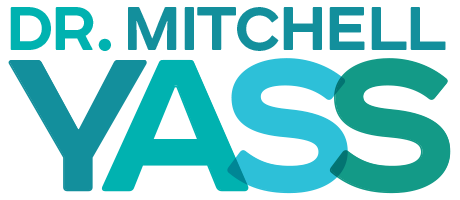I recently was asked to evaluate a patient who was having achilles tendinitis at the left ankle region. He had had the pain at the tendon for months. He was treated with cold laser, a typical physical therapy agent used to address inflammation. It didn’t work because there was no indication that inflammation was even present and the patient continued to have the pain. It limited him from performing most functional activities including making walking difficult.
I explained to him that the Yass Method is designed to identify the cause of pain. Once the cause is established, the cause can be treated. If the cause of the pain is resolved then the body no longer needs to emit a pain signal and it simply ceases. The Yass Method uses the body’s presentation to tell you what is the cause of the pain.
In this case, upon evaluation, I found that the patient’s left hip was much higher than the right hip. I found it harder for him to single leg stand on the right left than the left leg. You would have guessed that it should be harder to stand on the left leg as this was the leg with the achilles tendinitis. These two key findings led me to the conclusion that the patient had strained the right hip muscle called the glute med. It is responsible for keeping the pelvis level when single leg standing as when you are walking. When the right glute med strained, the left lower back muscle tried to compensate to keep the pelvis level but strained as well. Once the left lower back muscle strained, it shortened causing the left hip to be elevated. This creates a sensation as if you are stepping down a curb every time you step on the left leg. This excess load makes it harder for you to push of the left leg when you are pushing yourself foward when walking. The excess load causes the left calf to strain which is the primary muscle responsible for pushing you forward when walking. The strain of the left calf causes an altered load in the achilles tendon and that is what leads to irriation of the left achilles tendon creating pain there.
The first thing to realize is that although pain is being experienced at the achilles tendon, nothing structurally has changed at the tendon so treating the tendon is pointless. The pain at the tendon is the result of altered force on the tendon coming from the calf muscle. Once this is understood, now you can try to figure out why there is altered force coming from the calf muscle. In this case, it was amazingly the result of a strained hip muscle on the opposite side causing the left calf to have to work harder. A simple massage of the right glute med and the left lower back muscle which caused a leveling of the hips, altered the force on the left calf and the patient was able to instantly walk with almost a complete resolution of the left achilles tendon pain. Performing the proper exercises will correct the cause for good and prevent the achilles tendon from emitting pain.
The magic of the Yass method is that it attempts to work back all the way to the cause of the pain being experienced. It doesn’t matter where the pain is being experienced and in the vast majority of cases, the cause of the pain is not where the pain is being experienced.
Please recognize that the existing model of diagnosing treating pain does not follow the principle of looking for the cause of pain. That is why the possibility of getting a proper diagnosis is almost nill. I am presenting the Yass Method in my new book called The Pain Cure Rx: The Yass Method For Diagnosing And Resolving Chronic Pain. It is being released by Hay House Publishing on June 2, 2015 but is available for preorder on Amazon.com. To see more about the Yass Method, I am presenting a PBS special which can be seen on most PBS affiliates and is airing between June 1-14th. Please check your local PBS affiliate schedule.
Your only chance of resolving your pain is to identify the cause of the pain. It is a sad commentary on the existing medical model but the fact remains that the dependence on diagnostic tests like MRIs will prevent the correct cause of pain from being identified and therefore a correct treatment from being provided. The Yass Method is capable of identifying whether the cause of the pain coming from muscle, bone or nerve by interpreting the body’s presentation. Your body wants you to know what is wrong so it can be corrected. Look to the Yass Method to help you help your body.
